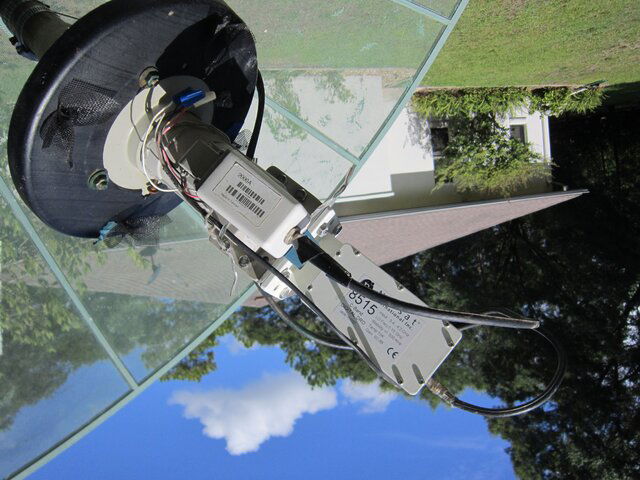7-21-2016
I sure hope I don't cause anyone to have a heart attack laughing at my foibles.
Took the cover off the Lnbs.
Ran the dish west until it was pointing below the roof. At that point I attempted
to set the Hardware limits. Ventura 24" Maxi. There is a round bar that can be
moved by unscrewing the set screw. So I moved it as far right as it would go and
the dish wouldn't move. Took another look and realized that there was a small
black button on the right. Reset the sliding bar back about 1/8" beyond the
black button. Now the dish is moving. I saw no way to hardware set the East
Limit. On the East side I am not to worried as the dish can not get that close
to the ground. About 20". The West side is another story. The dish can be
run into the ground on that side. So the only way I see to solved the problem
is to Set software limits.......
The other problem.... I ran the dish to the straight up position. Put a piece of
tape at the 6:00 o'clock position. Ran the dish as far to the East as I dared.
The tape at this point was about in the 8 o'clock position. I moved the lnbs
to the 9:00 position.
Came back in the house and pointed the dish at 99 and the highest signal
I got was 45. Gave up at that point as I spent 3 hours in over 90 heat.....
I sure hope I don't cause anyone to have a heart attack laughing at my foibles.
Took the cover off the Lnbs.
Ran the dish west until it was pointing below the roof. At that point I attempted
to set the Hardware limits. Ventura 24" Maxi. There is a round bar that can be
moved by unscrewing the set screw. So I moved it as far right as it would go and
the dish wouldn't move. Took another look and realized that there was a small
black button on the right. Reset the sliding bar back about 1/8" beyond the
black button. Now the dish is moving. I saw no way to hardware set the East
Limit. On the East side I am not to worried as the dish can not get that close
to the ground. About 20". The West side is another story. The dish can be
run into the ground on that side. So the only way I see to solved the problem
is to Set software limits.......
The other problem.... I ran the dish to the straight up position. Put a piece of
tape at the 6:00 o'clock position. Ran the dish as far to the East as I dared.
The tape at this point was about in the 8 o'clock position. I moved the lnbs
to the 9:00 position.
Came back in the house and pointed the dish at 99 and the highest signal
I got was 45. Gave up at that point as I spent 3 hours in over 90 heat.....





